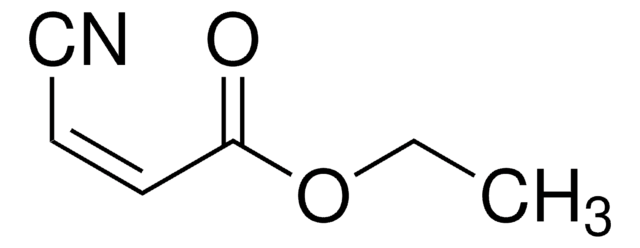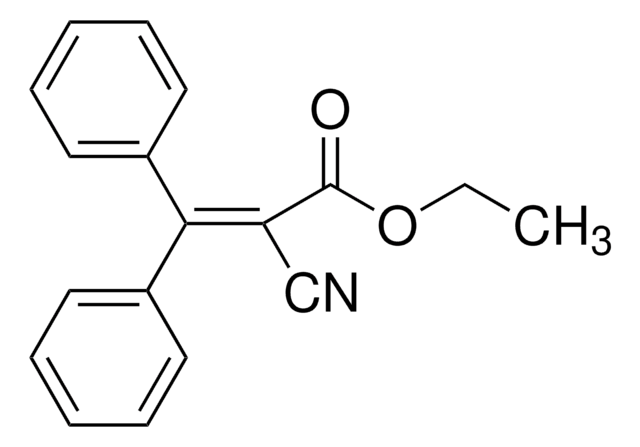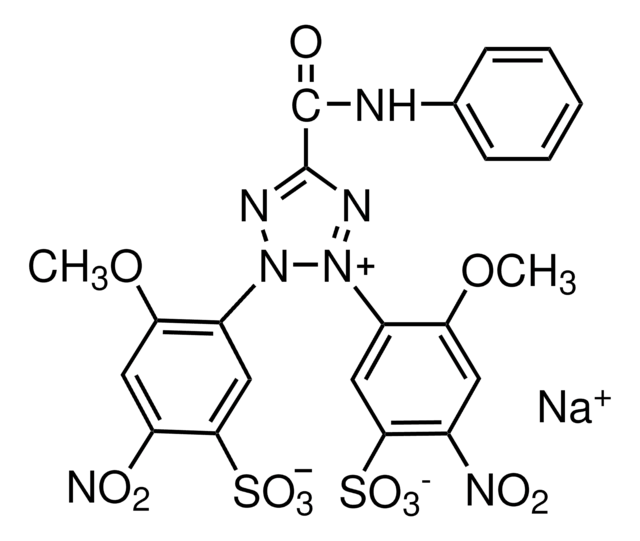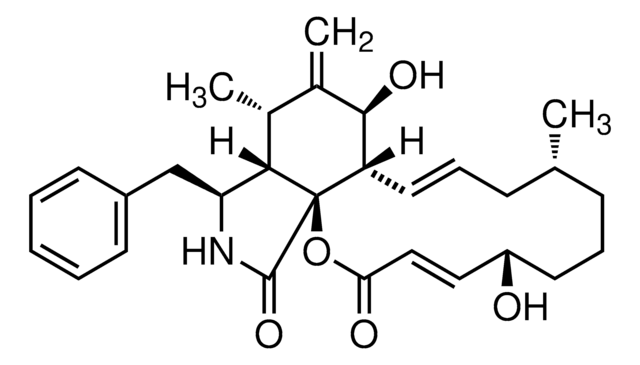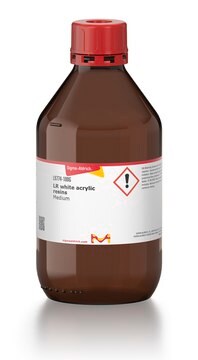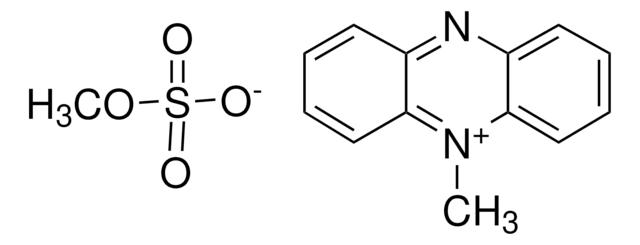E1505
Ethyl 2-cyanoacrylate
liquid
Synonym(s):
ethyl 2-cyanoprop-2-enoate
Sign Into View Organizational & Contract Pricing
All Photos(1)
About This Item
Empirical Formula (Hill Notation):
C6H7NO2
CAS Number:
Molecular Weight:
125.13
EC Number:
MDL number:
UNSPSC Code:
12162002
PubChem Substance ID:
NACRES:
NA.23
Recommended Products
form
liquid
storage temp.
2-8°C
SMILES string
CCOC(=O)C(=C)C#N
InChI
1S/C6H7NO2/c1-3-9-6(8)5(2)4-7/h2-3H2,1H3
InChI key
FGBJXOREULPLGL-UHFFFAOYSA-N
General description
Ethyl 2-cyanoacrylate belongs to the class of monomers known as cyanoacrylates. Ethyl 2-cyanoacrylate polymers are primarily used as adhesives due to their fast-setting and strong bonding properties. They are widely utilized for bonding a variety of materials, including metals, plastics, rubber, ceramics, and wood. These adhesives are used in industries such as automotive, electronics, crafts, and general repairs. Ethyl 2-cyanoacrylate adhesives find applications in industrial and manufacturing processes. They are used for sealing products, encapsulating electronics, and securing parts during assembly.
Application
Ethyl 2-cyanoacrylate, commonly known as super glue, has several uses in the field of bioadhesives:
- Wound Closure: Ethyl 2-cyanoacrylate is often used in medical settings to close small cuts and wounds. It forms a strong bond when it comes into contact with moisture, effectively sealing the wound.
- Tissue Adhesives: In surgical and medical applications, ethyl 2-cyanoacrylate is used to adhere tissues together. It can be used as an alternative to traditional sutures or staples in certain procedures.
- Drug Delivery Systems: In some cases, ethyl 2-cyanoacrylate has been investigated as a component in drug delivery systems and tissue engineering due to its biocompatibility and ability to form strong bonds with biological materials.
- It can also be mixed with hydrophobic silica nanoparticles for the designing of cotton fabrics for medical applications.
Signal Word
Warning
Hazard Statements
Precautionary Statements
Hazard Classifications
Eye Irrit. 2 - Skin Irrit. 2 - STOT SE 3
Target Organs
Respiratory system
Storage Class Code
10 - Combustible liquids
WGK
WGK 1
Flash Point(F)
185.0 °F - closed cup
Flash Point(C)
85 °C - closed cup
Personal Protective Equipment
dust mask type N95 (US), Eyeshields, Gloves
Choose from one of the most recent versions:
Already Own This Product?
Find documentation for the products that you have recently purchased in the Document Library.
Asymmetric superhydrophobic/superhydrophilic cotton fabrics designed by spraying polymer and nanoparticles
Sasaki K, et al.
ACS Applied Materials & Interfaces, 8(1), 651-659 (2015)
Antonella Obinu et al.
Colloids and surfaces. B, Biointerfaces, 177, 520-528 (2019-03-02)
Tumor eradication has many challenges due to the difficulty of selectively delivering anticancer drugs to malignant cells avoiding contact with healthy tissues/organs. The improvement of antitumor efficacy and the reduction of systemic side effects can be achieved using drug loaded
Marina C Jeppsson et al.
Journal of chromatography. B, Analytical technologies in the biomedical and life sciences, 878(27), 2474-2482 (2010-05-18)
Acrylates are used in vast quantities, for instance in paints, adhesive glues, molding. They are potent contact allergens and known to cause respiratory hypersensitivity and asthma. Here we study ethyl 2-cyanoacrylate (ECA), methyl methacrylate (MMA) and 2-hydroxyethyl methacrylate (HEMA). There
Xiaofeng Li et al.
Journal of colloid and interface science, 340(1), 93-97 (2009-09-12)
Hollow microspheres of poly(ethyl alpha-cyanoacrylate) were prepared via vapor phase polymerization using micro-waterdroplets as template and initiator. Depending on the ratio of the shell thickness to the radius, the hollow microspheres would crimple to form either microballoons or microcups during
S Saska et al.
International journal of oral and maxillofacial surgery, 38(2), 180-186 (2009-01-23)
This study compared the fixation of autogenous onlay bone grafts with cyanoacrylate glue (Super Bonder) and with titanium screws. Twenty rabbits underwent bilateral parietal ostectomies. Bone segments were fixed anteriorly to the resulting bone defect. In group I, the grafts
Our team of scientists has experience in all areas of research including Life Science, Material Science, Chemical Synthesis, Chromatography, Analytical and many others.
Contact Technical Service